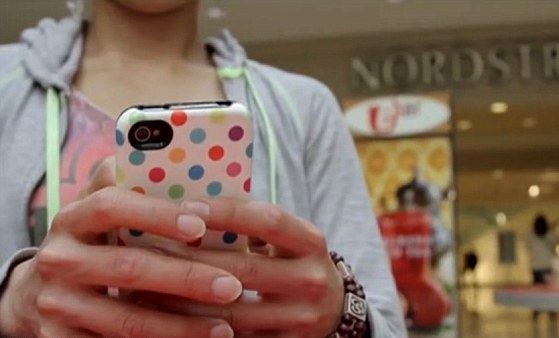為了與各類網絡零售商抗衡,美國一些實體商店也加入“監視追蹤”大軍,開始通過顧客的手機和能夠識別顧客面部表情的攝像頭追蹤顧客在店內的行跡、觀察顧客的情緒,當然是在未經顧客同意的情況下。實體店在與亞馬遜等網絡零售商的競爭中處于劣勢,因為網絡零售商可以使用網站cookie跟蹤用戶以便了解顧客的喜好,從而推薦相關產品和展示其他顧客的更多選擇。為此,美國多家連鎖零售商都在試用這些跟蹤技術,據此決定商場各類商品的布局、為顧客提供定制優惠券等。比如,美國高檔連鎖百貨店Nordstrom通過智能手機的WiFi信號分析顧客在店內各區域花費的時間、路過顧客的進店率并追蹤顧客在店內的行跡。雖然商家一再保證不會收集顧客的個人信息,這一舉動還是引發了人們對隱私權的擔憂。

 |
|
Nordstrom and Nordstrom Rack were able to track shopper behaviors via a smartphone’s wifi signal |
Add retailers to the list of groups tracking the movements and habits of unsuspecting people.
In an effort to gain the competitive advantage websites have had for years, stores have begun tracking shoppers' movements and moods through their cell phones and with special cameras that can recognize facial expressions – without shoppers' consent. Recent reports of this activity have raised privacy concerns despite repeated assurances from merchants that no personal information is collected from devices.
Some of the stores using the tracking technology are Benetton, Cabelas, Family Dollar, Mothercare and Warby Parker according to reports. Nordstrom used the technology last autumn in a pilot, but discontinued the program after public outcry.
Nordstrom stores posted signs telling customers about the tracking program, but shoppers interviewed by a Denver TV station were unaware of it since the signs were placed in hard to notice locations, near an entrance at floor level in one instance.
One shopper told the station it was ‘scary’ and another called it an invasion of her privacy.
Nordstrom and Nordstrom Rack were able to track shopper behaviors via a smartphone’s wifi signal, which allowed the retailer to analyse how long a shopper spent in a particular area and to track shopper movements, as well as how many people that walked past the store decided to walk in, according to a report by the New York Times.
Nordstrom stopped the pilot in May after customer complaints became too numerous, according to reports.
Stores want this information because they are at a disadvantage to online retailers like Amazon that are able to track shopper movements around the sites through the use of cookies, allowing the online competitors to recommend additional products and show what other people who bought one thing also bought.
‘Brick-and-mortar stores have been disadvantaged compared with online retailers, which get people’s digital crumbs,’ Guido Jouret, head of technology firm Cisco’s emerging technologies group, told the Times.
Cisco is one of a number of vendors that provide cameras to stores looking to track how long people spend in a given department, which can tell them how to best organize stores or streamline individual aisles.
RetailNext, according to the Times, combines the power of video with the trail of cookie crumbs left behind by cell phones. Their technology is able to not only track shopper movements, but also identify repeat customers – without a phone even connecting to store’s WiFi network. This is because phones looking for WiFi networks still send a unique identifier even if they don’t connect to a specific network.
Stores are also using cameras to analyze facial expressions and moods.
Synqera, based in Russia, uses facial recognition at store checkouts to tailor marketing based on gender, age and mood, according to the Times.
‘If you are an angry man of 30, and it is Friday evening, it may offer you a bottle of whiskey,’ Ekaterina Savchenko told the paper.
Other companies allow people to opt-in and provide some basic personal information that pinpoints them in a store department and can send them coupons aimed at encouraging a purchase, something at least one shopper who spoke to the Times liked.
‘I would just love it if a coupon pops up on my phone,’ Linda Vertlieb said.
(Source:Mail Online)
相關閱讀

(中國日報網英語點津 實習生 張益欣,編輯 Helen )